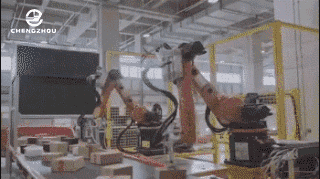Industrial robots require a precise and simple end effector that can handle many different parts. Know what type of parts you will be handling before selecting your industrial robot gripper. This article lists six key points that we systematically consider when choosing a robotic gripper.
1 shape
Asymmetric, tubular, spherical and conical parts are a headache for robotic cell designers. It is very important to consider the shape of the part. Some fixture manufacturers have a choice of different fingertips that can be added to the fixture to suit specific applications. Ask if the fixture can be used for your specific application.
2 size
The minimum and maximum dimensions of the objects to be processed are very important data. You’ll need to measure other geometries to see the best grip position for the gripper. Internal and external geometry needs to be considered.
3 parts quantity
Whether using a tool changer or adaptive gripper, it is imperative to ensure that the robotic tool grasps all parts correctly. Tool changers are large and expensive, but can work on virtual parts of a part with the right custom tooling.
4 weight
The maximum weight of the part must be known. To understand the payload of the gripper and robot. Second, make sure the gripper has the required gripping force to handle the part.
5 Materials
The material composition of the components will also be a focus of the clamping solution. The size and weight can be handled by the jig, and the material also needs to be compatible with the jig to ensure a grip on the part. For example, some grippers cannot be used to handle fragile items (such as ceramics, wax, thin metal or glass, etc.) and can easily damage items. But with adaptive clamps, the gripping surface can appropriately reduce the impact on the surface of the fragile part, so force-controlled clamps can also be part of the solution.
6 Production plan
The production of the product needs to be considered, whether it will change over time, if the assembly line has been making the same parts for the past ten years, it may not change very often. On the other hand, if the assembly line is incorporating new parts every year, it should be considered that the fixture should be able to accommodate these additions. It is even possible to consider whether the gripper used is suitable for other applications. With this factor in mind, choose a gripper. Make sure that the gripper can accommodate potential future operations of the robotic cell.
By determining part specifications, this data can be compared to available fixture specifications. The required travel of the gripper can be determined by the shape and size of the parts that must be handled. The required clamping force is calculated taking into account the material and weight of the part. What are the different parts that the gripper can handle, it is possible to see if the robot needs a tool changer, or if a single gripper will work properly.
Choosing the right gripper can make the industrial robot have good function and play the best role.
Post time: May-31-2022

